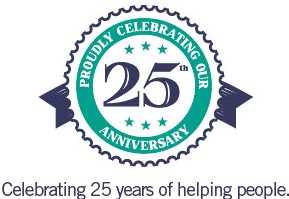If you’re feeling overwhelmed by debt, you’re not alone. Many people in Alberta find themselves in the same situation, struggling to keep up with bills and wondering how they’ll ever catch up. Bankruptcy can feel overwhelming, but it’s designed to give you a fresh start when debt feels unmanageable.
Bankruptcy offers a way to stop collection calls, wage garnishments, and other financial pressures, giving you a chance to reset and rebuild. While it’s a big decision, understanding how it works can help you decide if it’s the right path for you.
Bankruptcy Explained: What It Means for You
What Is Bankruptcy?
Bankruptcy is a legal process to protect you from creditors, but in turn, you are vesting your assets in your Licensed Insolvency Trustee, who oversees your bankruptcy estate. Bankruptcy can be a way out when debt feels impossible to manage. Think of it as hitting the reset button on your finances. A Licensed Insolvency Trustee—a federally licensed trained professional—will walk you through the process step by step.Once you file, most creditors must halt collection action, though secured debts like mortgages may remain, while some unsecured debts might be wiped out. That said, you may need to buy-back or sell some of your belongings to settle your debts through bankruptcy. It’s not an easy decision, but for many, it’s a chance to breathe again and start fresh.
Why Do People Choose Bankruptcy?
Life can throw unexpected challenges your way—job loss, medical bills, or overwhelming credit card debt. When high-interest rates or sudden expenses make repayment impossible, bankruptcy can provide a quick way to regain control.
But it’s not a one-size-fits-all solution. You have to explore all your options, so you can make the best choice for your situation.
Are You Eligible for Bankruptcy in Alberta? Know Your Options
If you’re struggling with debt in Alberta, bankruptcy might be one of your options—but it’s not the only one. Before making any decisions, it’s important to understand how it works, whether you qualify, and what alternatives might be a better fit for your situation.
Do You Qualify? Check These Eligibility Requirements
To file for bankruptcy in Alberta, you’ll need to meet a few basic requirements. For starters, you must owe at least $1,000 in unsecured debt (like credit cards or personal loans) and be unable to pay your bills as they come due. You’ll also need to live in Canada or own property here.
Alberta Bankruptcy Exemptions: Know Your Rights
Bankruptcy in Alberta falls under the federal Bankruptcy and Insolvency Act, but which assets you keep is determined by provincial legislation. Alberta’s exemptions, found in the Civil Enforcement Act, are among the most generous in Canada.
They protect vital property—like a portion of your home equity, one vehicle, household items, tools of your trade, and certain retirement savings—so you can retain essentials. Because filing is a major step, it’s wise to speak with a Licensed Insolvency Trustee—like our team at BNA Debt Solutions—to understand these rules and discover the right solution for your situation.
The Step-by-Step Bankruptcy Process in Alberta: Your Roadmap to a Fresh Start
In Alberta, a Licensed Insolvency Trustee will be by your side, helping you navigate each step and protecting what matters most to you. Let’s break it down together, so you can start moving toward a fresh financial start.
Step 1: Finding the Right Licensed Insolvency Trustee (LIT)
When it comes to bankruptcy, a bankruptcy trustee, also known as a Licensed Insolvency Trustee (LIT) is your go-to professional—they’re the only ones legally allowed to administer the process.
Be careful, though. Some third-party debt consultants might charge you extra fees you don’t need, just to refer you to a trustee. That’s why we recommend working directly with a trustee and avoiding a middle man. Start with a free consultation here at BNA—an LIT will review your finances and help you plan your next steps, no strings attached.
Step 2: Financial Assessment– What the Trustee Evaluates
During your financial assessment, the trustee will take a close look at your debts, income, assets, and your household size. This helps them figure out if bankruptcy is the right option for you under Alberta’s rules. They’ll go through everything with you to make sure the next steps fit your specific situation. It’s all about making the process clear, less scary, and tailored just for your circumstances.
Step 3: Will You Lose Everything? Understanding Asset Protection
What Assets Can You Keep?
When facing financial difficulties, it’s important to know that you don’t have to lose everything. Alberta law has your back by protecting certain assets, so you can keep what you need to get back on your feet.
What You Can Keep:
- You can retain up to $40,000 in home equity value. This means that if you own a home, you can keep a good chunk of its value. However, staying current on your mortgage and property taxes is essential to protect your home during bankruptcy.
- Necessary items like clothing and household furniture are also protected, though there are limits on their total value.
- If you have a vehicle, you can keep one worth up to $5,000. This is crucial for getting to work and maintaining your daily life.
- For those who rely on their tools for work, you can keep up to $10,000 worth of work tools.
- Your RRSPs are generally protected during bankruptcy, allowing you to maintain your retirement savings. However, it’s important to note that excessive RRSP contributions made within the year prior to declaring bankruptcy may be subject to review and potential repayment by the court. This ensures that the protection is applied fairly while addressing any undue advantages.
What Happens to Non-Exempt Assets?
If you have assets that aren’t protected, those might be sold to help pay off your debts, or your trustee may give you the option to repurchase them in a timely manner. These assets are included in your bankruptcy estate, managed by your Licensed Insolvency Trustee to settle debts.
The sale of these assets serves a dual purpose: it helps settle your debts and paves the way for your fresh financial start. By addressing these non-exempt assets, you’re taking an important step towards resolving your financial challenges and setting the stage for a more stable future.
Step 4: Bankruptcy Payments & Surplus Income Calculation
Your monthly bankruptcy payments depend on how much you earn and the size of your family. If your income is above a certain limit (set by the government), you’ll need to put 50% of the extra toward repaying your debts. However, if your income falls below this threshold, you may only need to pay a small, monthly voluntary fee, which typically covers the administrative costs of the bankruptcy process.
To make it clearer, here’s a quick breakdown of the income limits as of 2024:
| Family Size | Income Threshold |
| 1 | $2,610 |
| 2 | $3,249 |
| 3 | $3,995 |
| 4 | $4,850 |
Step 5: Signing and Filing Bankruptcy Documents
Filing for bankruptcy means signing some paperwork—and providing things like pay stubs, ID, a list of your debts, and what you own. Your trustee will prepare all of the paperwork for you. Once bankruptcy is filed, it cannot be reversed. This is why it’s super important to understand exactly what you’re agreeing to. Your trustee will walk you through every document, making sure you’re comfortable and know exactly what’s happening before you take this big step.
Step 6: Automatic Stay of Proceedings– Say Goodbye to Creditor Harassment
Once you file, an automatic stay of proceedings kicks in, giving you immediate relief. This means creditors must stop garnishing your wages, suing you, or calling to collect debts. While it might take a little time for all the calls to stop completely, this step is a game-changer—it gives you the breathing room to focus on rebuilding your financial life without the constant stress.
Life After Bankruptcy: What Changes and What Stays the Same?
Your Responsibilities During Bankruptcy
During bankruptcy, there are a few important steps you’ll need to take. First, you’ll attend two credit counselling sessions—they’re not just a requirement, but a chance to learn practical tips for managing your money better.
You’ll also need to provide your monthly income and expenses to your bankruptcy trustee.This helps them determine your monthly payments and make sure everything’s on track. Having a good handle on your budget is all part of the process to help you rebuild and move forward.
Assist your Trustee in valuing your assets and if there is excess equity to be paid into the bankrupt estate, either make payment arrangements with the Trustee or surrender the asset(s) to be sold.
Assist your Trustee in filing certain income tax returns for you.
How Long Will Bankruptcy Affect You?
How long bankruptcy lasts depends on your situation. If it’s your first time, it usually takes between 9 and 21 months. For a second bankruptcy, it can stretch to 24 to 36 months.
The timeline can also change if you’re earning above a certain amount—you might need to make extra payments, called surplus income payments.
Will Bankruptcy Destroy Your Credit Score? Here’s the Truth
Filing for bankruptcy does affect your credit score, and it stays on your report for six years if it’s your first time. If you’ve filed before, it can stay for up to 14 years.
But the good news is you can rebuild your credit. Start by making payments on time and consider tools like secured credit cards to help you get back on track. With patience and smart financial choices, you can slowly but surely improve your credit over time.
Can You Keep Your Car and Home?
A big worry for most people is, “Can I keep my car or house if I file for bankruptcy?” If you’re up to date on your mortgage payments and the value of your car or home falls within Alberta’s exemption limits, you can usually keep them.
The key is to stay on top of your mortgage or car loan payments. If you’ve built up a lot of significant equity, it’s a good idea to talk to your lender about your options. Keeping your payments current is the best way to protect what matters most to you.
Does Bankruptcy Affect Your Job? The Reality for Employees
Most jobs are unaffected by bankruptcy, but those in financial services, law enforcement, or government roles may need to disclose it. If you are unsure, check with your employer or licensing board.
Is There a Better Way? Why Consumer Proposals Are a Smart Alternative.
When facing financial troubles, it’s important to know you’ve got options. A consumer proposal can be a great alternative to bankruptcy, letting you pay back a portion of what you owe in a manageable way, without losing as much control over your finances. For many, it’s a way to find relief while keeping their dignity intact.
What Is a Consumer Proposal? A Bankruptcy-Free Debt Solution
A consumer proposal is a formal agreement in which individuals agree to pay creditors a percentage of what they owe over an extended period. It’s a solid alternative to bankruptcy, giving you a chance to get back on track without the long-term consequences. Think of it as a fresh start that lets you keep more control over your finances and your future.
Do You Qualify for a Consumer Proposal? Key Requirements
A consumer proposal isn’t for everyone, but it could be a great option if you qualify. To be eligible, you’ll need to owe less than $250,000 (not including your mortgage) and have a steady income to keep up with the payments, or significant equity in assets you are willing to sell to fund the settlement.
If you owe more than $250,000 (not including your mortgage), you would qualify for a Division I Proposal, which is a similar concept but slightly different timelines and outcomes.
Why Choose a Consumer Proposal Over Bankruptcy?
A consumer proposal can be a better choice than bankruptcy for many people. It still stops collection calls and legal actions right away, giving you some breathing room. Plus, it’s easier on your credit—it only stays on your report for 6 years from filing date, or 3 years after you finish paying it off, whichever comes first. You also get to keep important things like your home and car, which can make rebuilding your life a lot smoother. In short, it’s a more flexible and respectful way to tackle debt.
| Feature | Consumer Proposal | Bankruptcy |
| Debt Repayment Terms | Customizable payments will not fluctuate once creditors accept the terms. | Payment fluctuates based on income throughout the income reporting period and equity in assets |
| Credit Impact | Moderate effect on credit score | Severe effect on credit score |
| Stress Level | Reduced stress with fixed payments | Some financial stress may arise due to potential asset sales and payment adjustments. |
| Financial Control | Greater autonomy over finances | Limited financial autonomy |
Common Misconceptions About Bankruptcy in Alberta
Myth #1: Bankruptcy Wipes Out All Debt – Not True!
While bankruptcy can relieve a lot of financial pressure, it doesn’t clear every type of debt. Things like recent student loans (less than 7 years old), child support, alimony, or debts from fraud aren’t included.
Myth #2: You’ll Lose Everything – The Law Protects You
This is simply not true. Alberta’s laws protect essential assets—such as your home, your car, and everyday personal items—as long as their value falls within specific exemption limits. For example, you can keep up to $40,000 in home equity, a vehicle worth up to $5,000, and necessary household items within defined limits. The goal is to help you maintain a basic standard of living while you work through your financial challenges.
Myth #3: Bankruptcy Ruins Your Financial Future Forever
Bankruptcy isn’t the end of the road—it’s a temporary bump that won’t last forever, offering a valuable opportunity to rebuild. Many people recover their credit within a few years by practicing good financial habits, and the fresh start bankruptcy provides can be a critical step toward a brighter financial future. It’s not a permanent setback but a chance to reset and regain control of your finances with the right strategies.
Rebuilding a Fresh Financial Start After Bankruptcy
Tips to Improve Your Credit Score
Rebuilding your credit after bankruptcy might feel overwhelming at first, but take heart—it’s possible. Here are some practical steps to help you get started and stay on track:
Start with a Secured Credit Card
Begin small by getting a secured credit card. You’ll put down a cash deposit (which usually becomes your credit limit), and by using it wisely—think of small purchases and paying them off in full and on time—you can gradually rebuild your credit history. This will not only help you in the long run but also show mortgage lenders that you’re responsible with credit.
Set Up Automatic Bill Payments
Another helpful tip? Set up automatic payments for your bills. Life gets hectic, and missing a payment can set you back. Automating your payments takes the stress out of remembering due dates and helps you stay consistent.
Keep Your Credit Usage Low
Finally, try to keep your credit usage low. That means using only a small portion of the credit available to you. Credit agencies notice this, and it can make a big difference in boosting your score over time.
Remember, rebuilding credit is a journey, not a sprint. Be patient with yourself, celebrate small wins, and know that every responsible choice you make is moving you closer to financial stability.
Smart Money Strategies to Stay Debt-Free
Staying debt-free starts with small, thoughtful steps. Budgeting apps can help you track spending and find ways to save, while building an emergency fund—even slowly—can protect you from life’s surprises. And remember, you don’t have to do it alone. A financial counsellor can offer personalized advice to help you create a plan and stay on track. Progress, not perfection, is the goal.
Can You Buy a Home Again? Mortgage Approval After Bankruptcy
Buying a home after bankruptcy is possible, often within two years of your discharge. Focus on rebuilding credit, saving consistently, and showing lenders you’re managing money responsibly. It’s a journey, but with patience and careful planning, you can make it happen.
Take Back Control with BNA Debt Solutions: Trusted Support for a Stronger Financial Future
At BNA Debt Solutions, we understand how overwhelming debt can feel—and we’re here to help. As a family-owned Calgary firm with over 27 years of experience, we’ve helped countless Albertans find their way forward.
We often recommend consumer proposals as a better alternative to bankruptcy. This approach allows you to repay only a portion of what you owe over a longer period, giving you a respectful and manageable way to regain control.
Your dignity is our priority. We’ll listen without judgment, clearly explain your options, and guide you step by step. With solutions tailored to your unique situation, we’re here to help you feel confident and hopeful about the future.
Frequently Asked Questions
Will I lose my house if I file for bankruptcy in Alberta?
Not necessarily. Alberta’s Civil Enforcement Act protects up to $40,000 in home equity, provided you keep up with secured debts like your mortgage. If your home equity is below this threshold and you stay current on your mortgage payments, you can likely keep your home. However, if your equity exceeds this limit, you will have to repurchase any excess from your bankrupt estate, or your home may be sold to repay creditors.
Can I Claim Bankruptcy More Than Once?
Yes, you can file for bankruptcy more than once, but the process becomes stricter. A second bankruptcy will last longer (24–36 months) and a third bankruptcy duration is set by the Court, but you are looking at 36 – 48 months. Consulting with a bankruptcy trustee, such as a Licensed Insolvency Trustee (LIT) can help you explore alternatives like a consumer proposal to avoid repeated filings.
Can I File For Bankruptcy On My Own, Or Do I Need A Licensed Insolvency Trustee (LIT)?
Bankruptcy in Alberta must be filed through a Licensed Insolvency Trustee (LIT). They are the only professionals legally authorized to manage the process. Attempting to file on your own isn’t an option under the Bankruptcy and Insolvency Act.
Can I Switch From Bankruptcy To A Consumer Proposal If My Financial Situation Changes?
Yes, you can switch from bankruptcy to a consumer proposal if your financial situation improves. An LIT can help you transition, allowing you to repay a portion of your debts over time while keeping more assets. This option is often more flexible and less impactful on your credit.
Can I Start A New Business While In Bankruptcy?
Starting a new business during bankruptcy is possible, but it comes with restrictions. You cannot be a director of a company while bankrupt, so your business would have to be a sole proprietorship. You must report all income to your LIT, and any profits will be subject to surplus income payments. It’s best to discuss your plans with your trustee to ensure compliance with Alberta’s bankruptcy laws.
What Happens If I Move To Another Province During My Bankruptcy Process?
If you move to another province, your bankruptcy process continues under the same Licensed Insolvency Trustee (LIT). However, asset exemption rules may change if you change your principal residence. Inform your LIT about the move to ensure a smooth transition and avoid complications.




